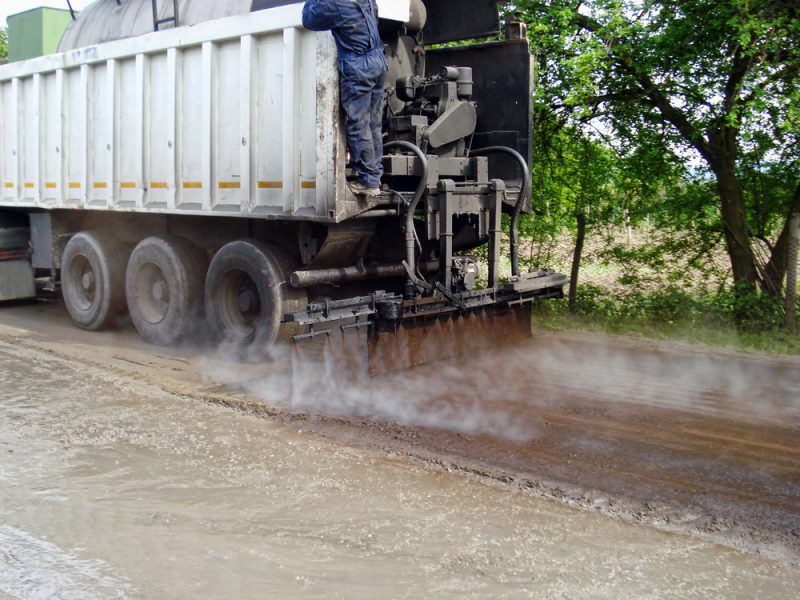
Magnesium and calcium chlorides are commonly used as dust suppressants on unpaved roads. These chloride compounds are used for dust control because they are hygroscopic and deliquescent…meaning that they have the ability to absorb moisture from the humid air. The absorbed moisture helps limit dust by keeping the surface of the road moist enough to hold the dust particles down and reduces blow-off as fugitive dust.
Although magnesium and calcium chlorides are considered to be less expensive than most other dust control agents, the potential negative impact of using these salts may outweigh any budget savings. For many, there are numerous reasons why using chlorides are less than desirable for dust control on their unpaved roads, these may include:
- The unpaved road can become a sloppy mess during the spring thaw
- The unpaved road may become slippery when wet if clays are present
- The magnesium or calcium chlorides wash off readily with rain
- Repetitive applications may be required to control dust
- Potential to leach chloride into shallow drinking water wells
- Doesn’t work well in low humid conditions
- Concentrated chlorides are very corrosive
- Attracts wildlife to roads for the salt and create driving hazards
- Recognized to be harmful to important roadside vegetation
Despite the perceived cost savings, many who have used chlorides in the past have expressed interest in exploring more environmental-friendly alternatives. Nevertheless, switching to an alternative dust control agent used on a road that still has residual chloride, in some cases, can possibly pose a challenge. For example, if the remaining chloride on the road surface is high enough to absorb and retain water, then it could keep an alternate type of dust control agent from setting up properly. Many dust control products have water in their formulation or are mixed with water for application purposes. This water typically needs to evaporate before the product can properly cure. If the chloride “holds” onto the applied water, it then can negate a quick curing process.
Fortunately, in many cases, Earthbind can work synergistically with a remaining chloride residual for successful dust control. An Earthbind solution can be applied at a rate and concentration where it can set up as a durable “crust” on the road surface while keeping the moisture in the chloride residual from desiccating. This will allow the chloride residual to do its thing by keeping the road material moist while Earthbind will further enhance the dust control with a durable bound surface.
Earthbind® is considered to be an environmentally-friendly bio-based modified asphalt emulsion that is specifically made for dust control. For more information, please feel free to contact an EnviRoad sales engineer at 503.279.2600.
